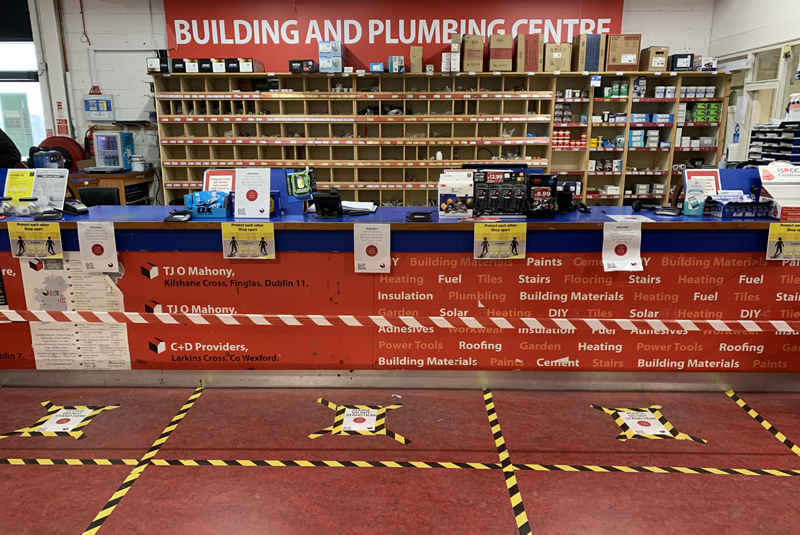
Many builders’ merchants are continuing to trade, helping to supply essential and emergency services, whilst striving to protect their staff and customers during the coronavirus pandemic. Andy Scothern, digital expert and eCommonSense founder, has collected some of the best practical steps that merchants are taking around the UK and Ireland today.
As the Coronavirus crisis escalates, many builders’ merchants are rightly worried about the future and how it will affect their business going forward especially as merely closing down for the next three or four weeks will not be sufficient to remove the risks associated with the crisis.
An article by MIT Technology Review suggests that Covid-19 will be to builders’ merchants what the 9/11 terrorist attack was to airports, which led to wholesale and profound changes in the way they operate. The encouraging thing is that after the initial shock of those changes, we adapted and airports work just fine now.
If you are in any doubt about how to operate, the BMF is regularly publishing up-to-date government guidance on its website.
While there remain many unknowns, one thing is absolutely clear: if you are solely reliant on a face-to-face branch business model and don’t have a fit-for-purpose digital operation, you will be exposed if branches are forced to close.
We have seen many merchants rushing forward their digital launches ready for this eventuality, and online sales are hitting unprecedented levels. Also, the new consumer behaviour of ordering online is likely to become ingrained, so even after the pandemic crisis is over, this side of the business is likely to remain strong.
However, even if your online operation is not where you would like it to be, there are plenty of practical steps that you can take to keep trading in your branches while keeping both your staff and customers safe.
As the MD of a company that produces websites for builders’ merchants and a regular attendee of BMF events, I spend a lot of my time talking to our clients to see how we can support them. This means that I get a good overview of what is happening out there.
In the last few days, I have heard of some great examples on some of the steps that merchants have taken. The matter is so important that I wanted to share these practical examples. None of them are difficult to implement in your branches; many of them will be necessary in the post-crisis world.
The first thing to state is that the safety of your staff and customers must come first. That means that you have to take steps to protect them. If you can’t, then you cannot remain open at this time of national crisis.
If you can, then issue the appropriate PPE to staff members.
The risks can be managed if you get all of the following measures in place:
1. As with many things in life, common sense coupled with washing hands, cleaning regularly touched surfaces e.g. door handles and card machines and social distancing are a great place to start.
2. Reducing contact risk by keeping customers out of your branches is likely the best course of action, and even better if you can do deliveries only and keep customers out of your yard too. If you do deliveries, call ahead and make sure customers know to keep away from your delivery drivers and remove the need to sign paperwork for the time being.
3. Promote your eCommerce website and phone number with posters, social media, email, statement stuffers. Use any communication channel you have available to you to make them aware that they don’t need to order in person. Remote ordering remains the safest way for builders to order materials at this time.
We have been offering a free marketing toolkit during this period to all of our clients to make sure that builders are aware of this option. If your online operation is not as advanced as you would like it to be, then bolster your phone sales lines in the short-term.
4. For collected orders, take payments online or over the phone and encourage customers to stay in their vehicles by telling them to call ahead or allocate collection time slots to them. They can then stay in their vehicles while they are loaded.
If you do allow customers inside your branches:
5. Put up a notice at the entrance asking that only the people who need to be inside your branches are there. You don’t want people bringing children into branches as per the HSE directive which states: “Where practicable and in so far as is possible, parents are encouraged to limit bringing their children with them when visiting essential retail outlets.”
6. Put someone on the door to regulate entry and to ask what products customers need. Then direct them to minimise the amount of time spent wandering around the branch. They can also enforce the ban on groups gathering and over-crowding as well as making masks available at the door for customers to use.
7. Make sure that customers are aware of what is acceptable and what is not. Put up posters informing them of the rules during this time. Most people will understand the importance of following them but those that don’t should be ejected from the store.
8. Implement a one-way system marked on the floors of the aisles with arrows that will prevent people from passing each other where there is a significant chance of close contact. Put up signs saying ‘no passing’ in aisles.
9. Install sanitiser stations and direct people to it immediately on entering the store and by the payment terminals, as keypads are likely to be a hotspot for virus transfer. Better still if they can use contactless payment.
10. Provide clear advice to customers on where they should stand when ordering in your branches. This can be a simple matter of marking out the floor with tape along with clear instructions such as ‘wait here’ and ‘order here’. When marking out, keep in mind the 2-metre distancing rule.
11. Install Perspex screens at order desks to protect your staff and customers. Your frontline staff will be at greatest risk, as they are likely to come into contact with the greatest number of people during the day. This simple and cheap solution will offer them greater protection.
12. Communicate the steps that you are taking to all of your staff – this will give them the confidence that you are taking their health and safety seriously. Making sure that everyone is kept informed during times of crisis is critical to achieving the best outcomes.
13. Keep your back-office staff safe. Your business needs the back office to remain viable, and there are steps you can take to minimise the risk of everyone being off ill at the same time. Split your teams up so that this risk is minimised.
All of these practical steps are relatively quick and easy to implement – it is not overstating it to say that they won’t just save your business; they could help to save lives.
In addition to the practical advice outline above, Andy also made the following observations:
I have a friend who is a senior NHS consultant and is involved in the set-up of the 2000-bed intensive care hospital in the Excel centre. He told me that they don’t just need hospital equipment; they also need building materials. If all the merchants close their doors, the NHS will struggle to get what they need, resulting in a situation where lives may be lost due to the industry seeking to remove risk instead of doing what it does so well, which is to manage risk sensibly.
The message being that there’s justification for staying open if you can do so safely, which is in line with the current government guidelines and advice published by the BMF.
Another case I heard about yesterday came from a builder who has an unfinished job where the homeowner has no kitchen or boiler. If their local merchant were to close, that homeowner (one among many with incomplete projects) will have no cooking or heating facilities for at least an additional three weeks. That creates a tangible risk to the welfare to that family.
I’m sure the arguments will rage both ways and there’s some validity in both.
The interesting thing about all these social distancing restrictions is that they have a negative impact on the convenience of the in-branch experience and since ‘convenience is the new loyalty’, it won’t be long before customers take their business to the nearest online merchant.
One thing to bear in mind is that experts believe that Covid-19 may be around for as long the next 18 months, so there seems to be little doubt that, like the airports with their enhanced security, merchants branch operations are going to have to adapt and do so quickly.
Whether you choose to stay open or close, every merchant can help with the crisis by participating in the initiative being spearheaded by the BMF to provide any spare PPE equipment to the NHS: Contact your local BMF manager for details.
Here’s how the experts think the epidemic will pay out in a graph, which means that even after this initial lock down, it’s certainly possible that there may be more to come.
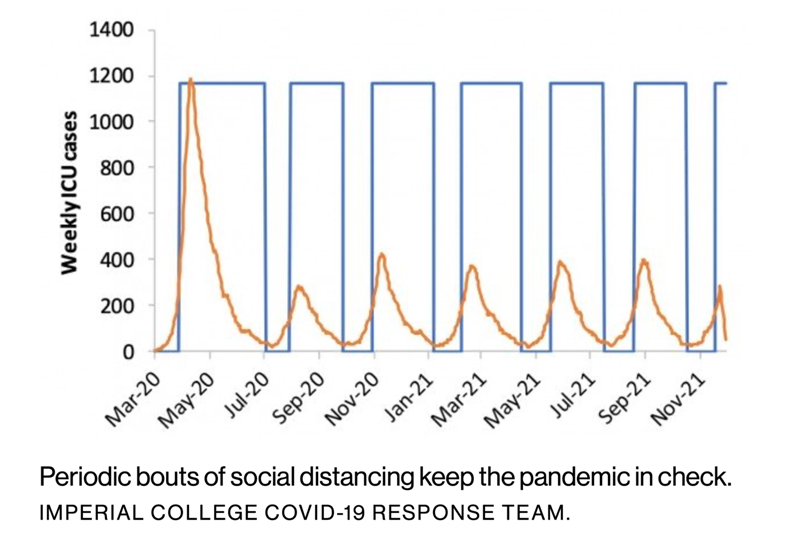 Credit: Imperial College
Credit: Imperial College
It is clear that this is not going to end anytime soon. Anyone thinking that this will be something that we get through and everything will return to how it was before is mistaken.
All builders’ merchants need to be rethinking their business model now and making fundamental changes that will remain long after the crisis ends. History shows that as consumer behaviour changes, it rarely reverts back to where it was beforehand.
Any merchants that don’t start planning now for the new future will be severely disadvantaged both during the crisis and, importantly, once we come out the other side.
So don’t think the traditional business model will still work in this brave new world – it is time to prepare for change now as the future is already staring you in the face.
eCommonSense provides websites and other digital services to the builders’ merchant sector. Visit the company’s website for more information.
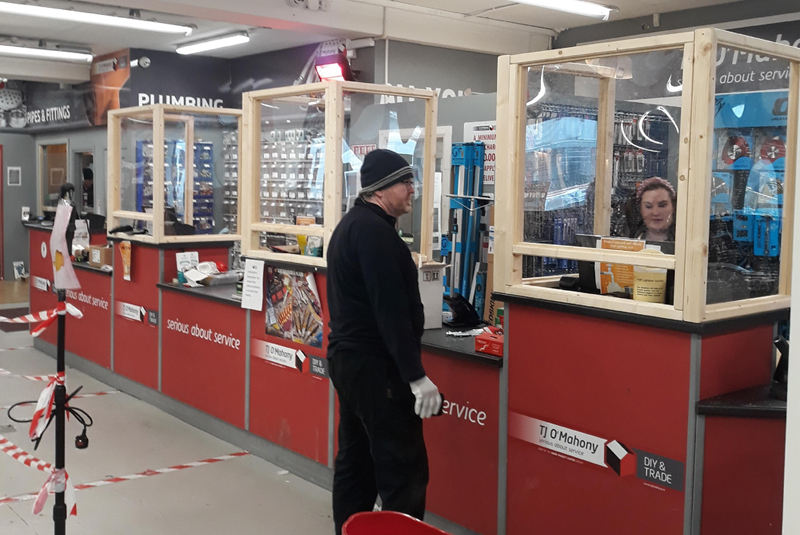
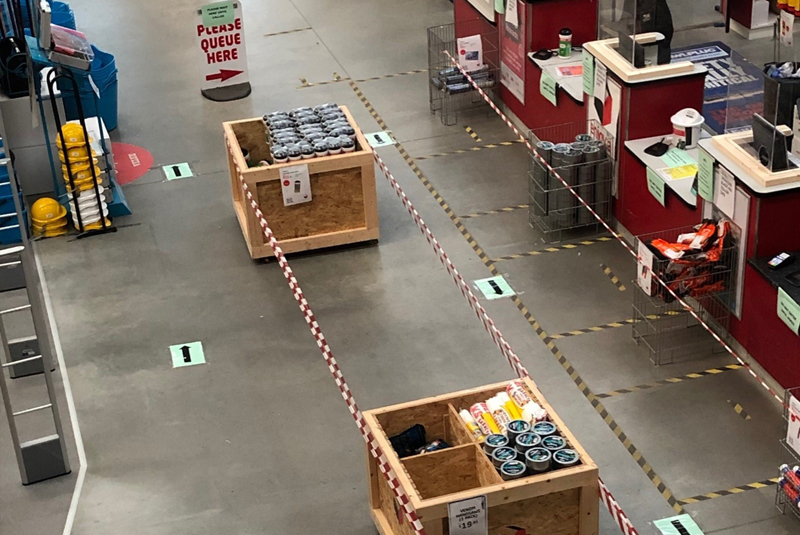
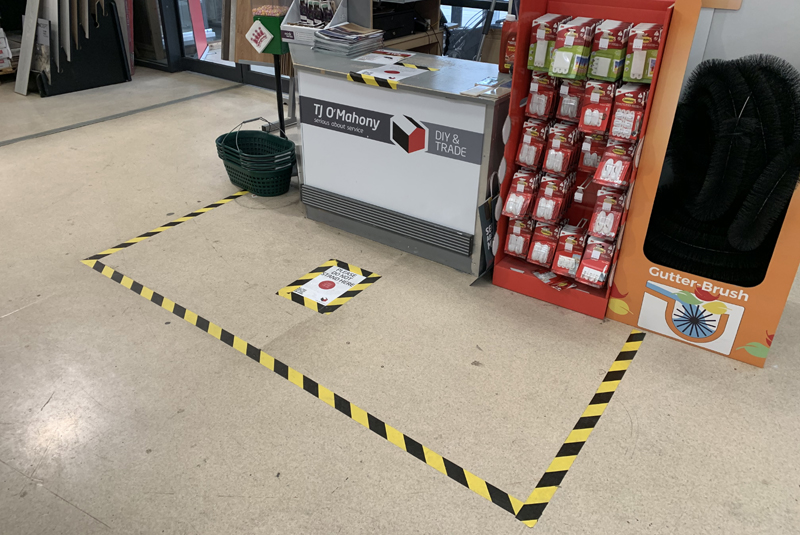 All branch pictures – credit to TJ O’Mahony
All branch pictures – credit to TJ O’Mahony









